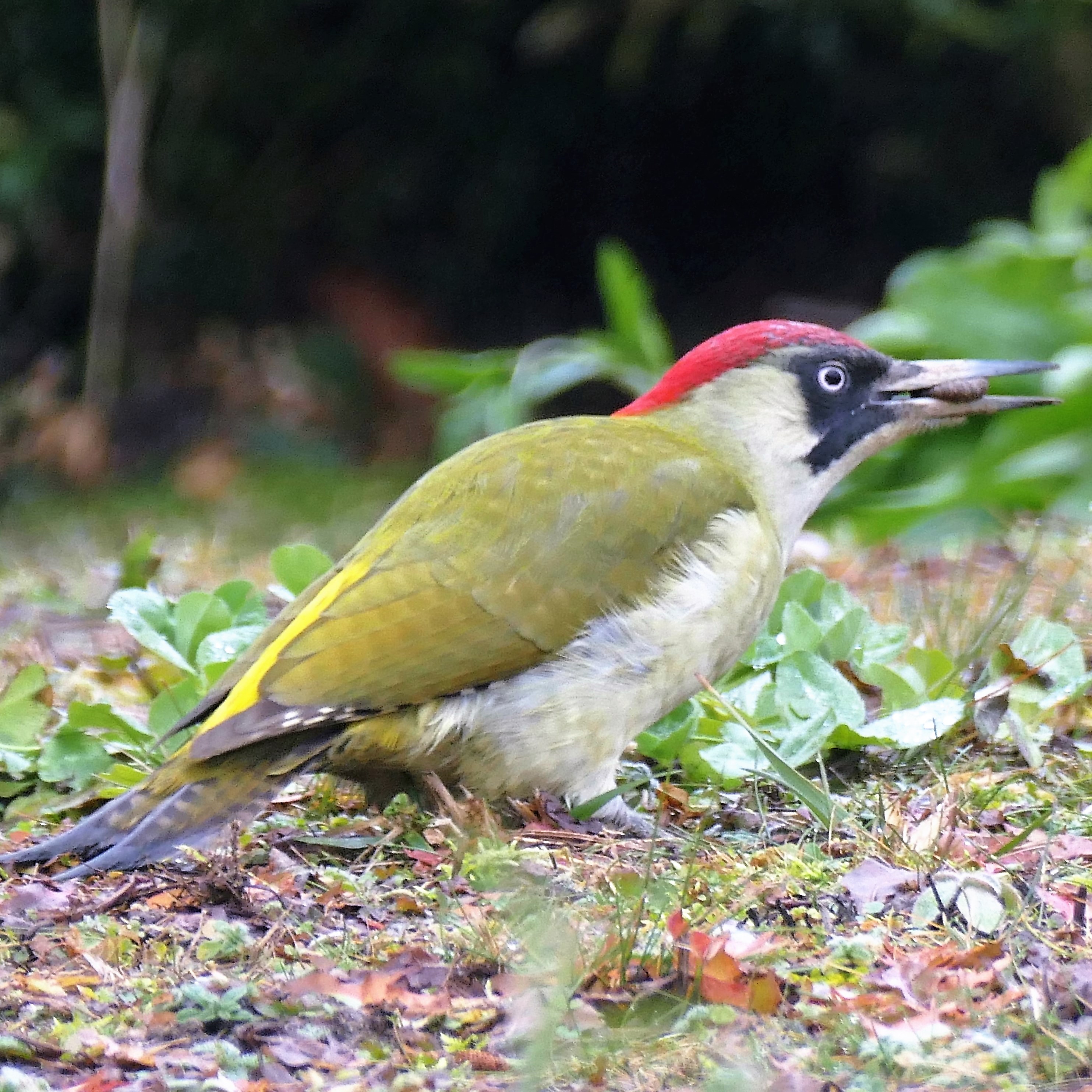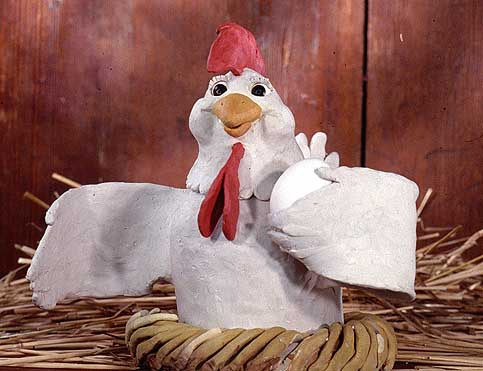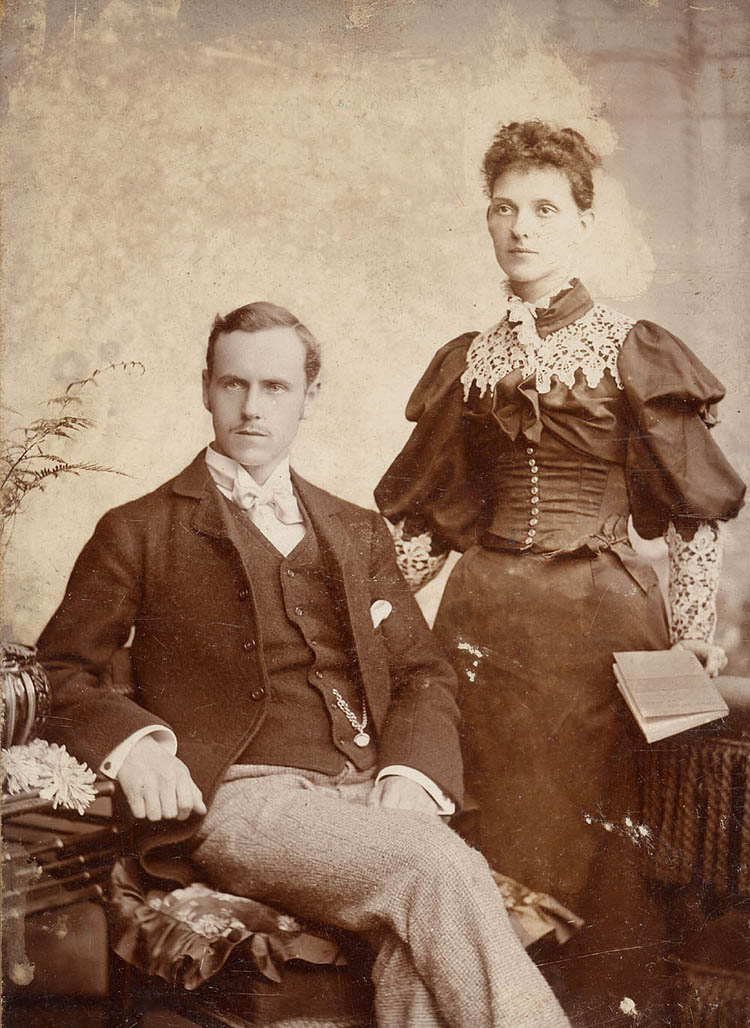|
Bagpuss
''Bagpuss'' is a British animated children's television series which was made by Peter Firmin and Oliver Postgate through their company Smallfilms. The series of thirteen episodes was first broadcast from 12 February to 7 May 1974. The title character was "a saggy, old cloth cat, baggy, and a bit loose at the seams". Although only thirteen episodes were produced and broadcast, the programme remains fondly remembered, and was frequently repeated in the UK until 1986. In early 1999, ''Bagpuss'' topped a BBC poll for the UK's favourite children's television programme. Characters Bagpuss himself is a stuffed, cloth cat. The six mice carved on the side of the "mouse organ" (a small mechanical pipe organ that played rolls of music) wake up and scurry around, singing in high-pitched voices. The names of the six mice are: Charlie Mouse, Jenny Mouse, Janey Mouse, Lizzy Mouse, Eddie Mouse and Willy Mouse, although only three of the mice are ever referred to by their name; the remaining th ... [...More Info...] [...Related Items...] OR: [Wikipedia] [Google] [Baidu] |
Oliver Postgate
Richard Oliver Postgate (12 April 1925 – 8 December 2008), generally known as Oliver Postgate, was an English animator, puppeteer, and writer. He was the creator and writer of some of Britain's most popular children's television programmes. ''Bagpuss'', ''Pingwings'', ''Noggin the Nog'', ''Ivor the Engine'', ''Clangers'' and ''Pogles' Wood'', were all made by Smallfilms, the company he set up with collaborator, artist and puppet maker Peter Firmin. The programmes were originally broadcast from the 1950s to the 1980s. In a 1999 BBC poll ''Bagpuss'' was voted the most popular children's television programme of all time. Early life Postgate was born in Hendon, Middlesex, England, into the Postgate family, as the younger son of journalist and writer Raymond Postgate and his wife Daisy (née Lansbury), making him the cousin of actress Angela Lansbury and maternal grandson of Labour politician, and sometime leader, George Lansbury. His other grandfather was the Latin classic ... [...More Info...] [...Related Items...] OR: [Wikipedia] [Google] [Baidu] |
Smallfilms
Smallfilms is a British television production company that made animated TV programmes for children from 1959 until the 1980s. In 2014 the company began operating again, producing a new series of its most famous show, ''The Clangers'', however it became dormant again in 2017, after production of the show was slightly changed, It was originally a partnership between Oliver Postgate (who wrote the scripts, animated the characters, and voiced many of the characters) and Peter Firmin (who made the models of the characters and drew the artwork). Several very popular series of short films were made using stop-motion animation, including ''Clangers'', ''Noggin the Nog'' and ''Ivor the Engine''. Another Smallfilms production, ''Bagpuss'', came top of a BBC poll to find the favourite British children's programme of the 20th century. Background In 1957, Postgate was appointed a stage manager with Associated-Rediffusion, the company that then held the commercial weekday television franchise f ... [...More Info...] [...Related Items...] OR: [Wikipedia] [Google] [Baidu] |
Sandra Kerr
Sandra Kerr (born 14 February 1942, Plaistow, Essex) is an English folk singer. Kerr sings and plays English concertina, guitar, Appalachian dulcimer and autoharp. She was a member of The Critics Group from 1963–1972. With John Faulkner, she wrote the music for the TV series ''Bagpuss'' and voiced the character of Madeleine Remnant (the rag doll). Kerr has been involved in many programmes for BBC Radio including ''The Music Box'' and '' Listen with Mother''. She has sung with her daughter Nancy Kerr (whose father is Ron Elliott, a Northumbrian piper) and in the groups Sisters Unlimited and Voice Union. Her work has developed to include teaching and leading workshops and she is the director of two folk choirs, Wercasfolk and VoiceMale. She was on the staff of Newcastle University's music department for 17 years until 2017. Discography *'A Merry Progress to London' with the Critics Group (Argo ZFB 60 1966) *'Sweet Thames Flow Softly' with the Critics Group (Argo ZDA 47 1966 ... [...More Info...] [...Related Items...] OR: [Wikipedia] [Google] [Baidu] |
Blean
Blean is a village and civil parish in the City of Canterbury, Canterbury district of Kent, England. The civil parish is large and is mostly woodland, much of which is ancient woodland. The village, developed village within the parish is scattered along the road between Canterbury and Whitstable, in the middle of the Forest of Blean. The parish of St. Cosmus and St. Damian in the Blean was renamed "Blean" on 1 April 2019. History According to Edward Hasted's 1800 county study, the village was once part of the king's ancient forest of Blean in the Hundred (county division), hundred of Westgate. The name Blean is the dative form of the Old English word ‘blea’ which means rough ground. Therefore the name of the parish means "the church of Saints Cosmas and Damian (sic) in the rough ground." In 1835, the Blean Union Workhouse, designed by William Edmunds, was built on four acres south of Herne Common. The design was based on Sir Francis Bond Head , Sir Francis Bond Head's ''Pla ... [...More Info...] [...Related Items...] OR: [Wikipedia] [Google] [Baidu] |
Horrabridge
Horrabridge is a village in West Devon, England with a population of 2,115 people in 2006, down from 2,204 in 1991. It is located approximately north of the city of Plymouth and south of Tavistock and is within the Dartmoor National Park. ''Horrabridge'' is a major part of Walkham electoral ward. The population at the 2011 census was 3,115. It sits on the River Walkham, a fishing river famous for its salmon. The village's name may have been taken from the 15th century pack-horse bridge which remains the only vehicular route from one side of the village to the other, and featured in the children's television programme Bagpuss. The bridge is a Grade I listed building. Horrabridge has two pubs the London Inn and The Leaping Salmon but has lost many of its shops over the last 20 years including a draper, television shop and a general store. The village does however retain its post office, family bakery, hairdresser, florist and newsagent. Until the beginning of the 20th century ... [...More Info...] [...Related Items...] OR: [Wikipedia] [Google] [Baidu] |
Yaffle
The European green woodpecker (''Picus viridis'') is a large green woodpecker with a bright red crown and a black moustache. Males have a red centre to the moustache stripe which is absent in females. It is resident across much of Europe and the western Palearctic but in Spain and Portugal it is replaced by the similar Iberian green woodpecker (''Picus sharpei''). The European green woodpecker spends much of its time feeding on ants on the ground and does not often 'drum' on trees like other woodpecker species. Though its vivid green and red plumage is particularly striking, it is a shy bird, and is more often heard than seen, drawing attention with its loud calls. A nest hole is excavated in a tree; four to six eggs are laid which hatch after 19–20 days. Taxonomy The European green woodpecker was formally described by the Swedish naturalist Carl Linnaeus in 1758 in the tenth edition of his ''Systema Naturae'' under its current binomial name ''Picus viridis''. The type loc ... [...More Info...] [...Related Items...] OR: [Wikipedia] [Google] [Baidu] |
Stop Motion
Stop motion is an animated filmmaking technique in which objects are physically manipulated in small increments between individually photographed frames so that they will appear to exhibit independent motion or change when the series of frames is played back. Any kind of object can thus be animated, but puppets with movable joints (puppet animation) or plasticine figures (''clay animation'' or claymation) are most commonly used. Puppets, models or clay figures built around an armature are used in model animation. Stop motion with live actors is often referred to as pixilation. Stop motion of flat materials such as paper, fabrics or photographs is usually called cutout animation. Terminology The term "stop motion", relating to the animation technique, is often spelled with a hyphen as "stop-motion". Both orthographical variants, with and without the hyphen, are correct, but the hyphenated one has a second meaning that is unrelated to animation or cinema: "a device for automatical ... [...More Info...] [...Related Items...] OR: [Wikipedia] [Google] [Baidu] |
Pincushion
A pincushion (or pin cushion) is a small, stuffed cushion, typically across, which is used in sewing to store pins or needles with their heads protruding to take hold of them easily, collect them, and keep them organized. Pincushions are typically filled tightly with stuffing to hold pins rigidly in place. Magnetic pin cushions are also sometimes used; though technically they are not "cushions", they serve the same basic function of holding pins neatly. History The recorded origins of pincushions date back to the Middle Ages of Europe. In the English language, they became known by many names: "pimpilowes, pimpilos, pimplos, pimploes, pin-pillows, pin-poppets". In 1376, Jehanne de Mesnil was bequeathed a silver pin case in a French text called ''Testament of Advice'' written by a woman known as La Monteure, from Rouen. Other references to pin cases during the Medieval era exist. By the 16th century, these were supplanted by references to "pyn pillows". Some examples from variou ... [...More Info...] [...Related Items...] OR: [Wikipedia] [Google] [Baidu] |
Rowing Boat
Rowing is the act of propelling a human-powered watercraft using the sweeping motions of oars to displace water and generate reactional propulsion. Rowing is functionally similar to paddling, but rowing requires oars to be mechanically attached to the boat, and the rower drives the oar like a lever, exerting force in the ''same'' direction as the boat's travel; while paddles are completely hand-held and have no attachment to the boat, and are driven like a cantilever, exerting force ''opposite'' to the intended direction of the boat. In some strict terminologies, using oars for propulsion may be termed either "pulling" or "rowing", with different definitions for each. Where these strict terminologies are used, the definitions are reversed depending on the context. On saltwater a "pulling boat" has each person working one oar on one side, alternating port and starboard along the length of the boat; whilst "rowing" means each person operates two oars, one on each side of the b ... [...More Info...] [...Related Items...] OR: [Wikipedia] [Google] [Baidu] |
Tartan
Tartan ( gd, breacan ) is a patterned cloth consisting of criss-crossed, horizontal and vertical bands in multiple colours. Tartans originated in woven wool, but now they are made in other materials. Tartan is particularly associated with Scotland, as Scottish kilts almost always have tartan patterns. Tartan is made with alternating bands of coloured (pre-dyed) threads woven as both warp (weaving), warp and Warp and woof, weft at right angles to each other. The weft is woven in a simple twill, two over—two under the warp, advancing one thread at each pass. This pattern forms visible diagonal lines where different colours cross, which give the appearance of new colours blended from the original ones. The resulting blocks of colour repeat vertically and horizontally in a distinctive pattern of squares and lines known as a ''sett''. Tartan is often called "plaid" (particularly in North America), because in Scotland, a ''Full plaid, plaid'' is a large piece of tartan cloth, wor ... [...More Info...] [...Related Items...] OR: [Wikipedia] [Google] [Baidu] |
Photographic Print Toning
In photography, toning is a method of altering the color of black-and-white photographs. In analog photography, it is a chemical process carried out on metal salt-based prints, such as silver prints, iron-based prints (cyanotype or Van Dyke brown), or platinum or palladium prints. This darkroom process cannot be performed with a color photograph. The effects of this process can be emulated with software in digital photography. Sepia is considered a form of black-and-white or monochrome photography. Chemical toning Most toners work by replacing the metallic silver in the emulsion with a silver compound, such as silver sulfide (Ag2S) in the case of sepia toning. The compound may be more stable than metallic silver and may also have a different color or tone. Different toning processes give different colors to the final print. In some cases, the printer may choose to tone some parts of a print more than others. Toner also can increase the range of shades visible in a print witho ... [...More Info...] [...Related Items...] OR: [Wikipedia] [Google] [Baidu] |
Elephant
Elephants are the largest existing land animals. Three living species are currently recognised: the African bush elephant, the African forest elephant, and the Asian elephant. They are the only surviving members of the family Elephantidae and the order Proboscidea. The order was formerly much more diverse during the Pleistocene, but most species became extinct during the Late Pleistocene epoch. Distinctive features of elephants include a long proboscis called a trunk, tusks, large ear flaps, pillar-like legs, and tough but sensitive skin. The trunk is used for breathing, bringing food and water to the mouth, and grasping objects. Tusks, which are derived from the incisor teeth, serve both as weapons and as tools for moving objects and digging. The large ear flaps assist in maintaining a constant body temperature as well as in communication. African elephants have larger ears and concave backs, whereas Asian elephants have smaller ears, and convex or level backs. Elephants ... [...More Info...] [...Related Items...] OR: [Wikipedia] [Google] [Baidu] |








_colourised.png)